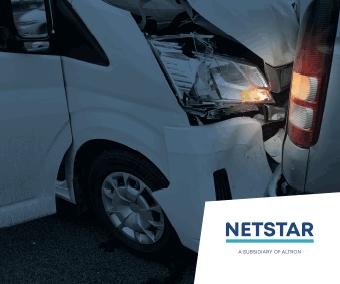Everyone knows that when it rains in South Africa, people seem to forget how to drive properly. Unfortunately, the weather plays a large role in how we should be driving on the roads. Rain, snow, hail, wind and mist are all common weather elements associated with South Africa winters and it’s important to stay safe on the road.
Be a better driver on the roads for the rest of this winter and you, your passengers and other drivers on the road will all be better off for it.
A roadworthy vehicle
Starting with the obvious, you need to make sure you’re driving a roadworthy vehicle. Some used cars in Gauteng are way past their prime and it’s time for those drivers to head to a car dealership in Pretoria and find themselves a new or certified, used car.
Finding cars for sale in Pretoria and around South Africa isn’t a difficult task. If your car has been giving you problems for a good few years and you’ve almost spent it’s worth (if not more) in repairs and services, you should really consider buying a new car. It will make the most financial sense and ensure that there are no out of control accidents on the already dangerous roads.
Make sure you’re visible
With your new, used or current vehicle, you need to make sure that whenever you are on the road, that your vehicle is visible. Regardless of the time or whether it’s a sunny winter’s day or not, your headlights should be on.
And when it’s dark or misty, your headlights and fog lights should be on (front and back ones if your vehicle has them). With so much happening with the weather and people focusing on finding the white lane lines in the rain to stick to, it’s difficult to acknowledge other vehicles on the road that wash out in the background when their lights aren’t on.
Don’t ask for an accident to happen, rather just put your lights on. It’s as simple as that.
Replace old wiper blades
Rain, wind and hail are a deadly combination on the roads. You might be managing it on one stretch of road, but as soon as you turn a corner, the wind smashes the rain into your car and you can no longer see a thing.
The best you can do in this situation is slow down, turn your brights, hazards and fog lights on, and set your windscreen wipers to the highest setting. In winter, your wiper blades are generally working full-time, so it’s important to replace them if they’re losing their clearing ability.
You can’t afford to be driving in heavy rain and not have your windscreen crystally cleared in the wipers intervals. You need a clear picture of what’s ahead, not a further smudged or distorted one. Have them checked out before every winter season begins and you’ll never drive into problems.
Don’t drive until it’s all clear
Winter mornings are terrible. The sun takes too long to rise and be your wake-up-call in the morning and it’s freezing as soon as your toe leaves the warmth of the blanket. For most of us, this makes our mornings slightly more rushed than usual and by the time we climb into the car, we really need to leave.
The problem with this is that your car needs time to mist up when you get into the car and demist before you start driving. You can blast the aircon all you like, but winter mornings are unforgiving when it comes to regulating vehicle temperatures. You can’t drive off in a rush and use the smallest cleared patch at the bottom of your windscreen to peer out of as the rest takes its time to clear up.
You either need to wake up (or leave) earlier so there’s time for the fog to clear or have a towel at the ready to wipe down the inside of your windscreen so that you can see out of it. But don’t drive until it’s all clear.
Mind the potholes
When it rains, we’re used to finding potholes on the road. While most of them may start small, the combination of constant rain and vehicles treading over them causes them to enlarge. And if your car’s tyre was to hit a deep pothole at a certain angle and speed, it could cause your steering system to lock (as a safety mechanism) and could lead to an accident or loss of control of the car.
If you’re driving along a road that you know has a history of potholes in the winter time, slow down and do your best to drive around them (without causing an accident in oncoming traffic of course).
The rules of the road are the same throughout the year, winter tends to throw us a pothole or two, but if you remain responsible and have a roadworthy vehicle, you’re doing your part for safer South African roads.
Advice on Safe Driving in Winter / Driving on Snow and Ice https://t.co/eXIKwvX8ag #ArriveAlive @SnowReportSA #ArriveAlive pic.twitter.com/jLHVK6Ih50
— Arrive Alive (@_ArriveAlive) July 17, 2017


























